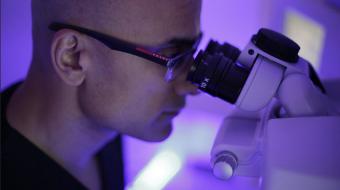Chronic Disease Education
Acute Condition Education
Working with your Family Physician
Working with Allied Care Providers
Eye Conditions - Optometrist

Knowledge is Power.
True/False - Quiz: Do You Understand Eye Conditions - Optometrist?
Information - Eye Conditions - Optometrist
 An optometrist provides primary vision care for people of all ages - from performing eye exams to diagnosing eye disease. An optometrist completes three or more years of college or university followed by four years of optometry school. Regular eye examinations are essential to diagnose eye conditions and assess your overall eye health.
An optometrist provides primary vision care for people of all ages - from performing eye exams to diagnosing eye disease. An optometrist completes three or more years of college or university followed by four years of optometry school. Regular eye examinations are essential to diagnose eye conditions and assess your overall eye health.
What to Expect During an Eye Exam
 During an eye exam with an optometrist, he or she will measure your visual acuity. Visual acuity is how well you can see from a distance, and the test involves looking at an eye chart to identify letters that get smaller as you read down. Other tests your eye care professional may perform during a regular eye examination include:
During an eye exam with an optometrist, he or she will measure your visual acuity. Visual acuity is how well you can see from a distance, and the test involves looking at an eye chart to identify letters that get smaller as you read down. Other tests your eye care professional may perform during a regular eye examination include:
• A visual field test to check your peripheral vision
• Using a tonometer to screen for glaucoma
• Pachymetry to measure cornea thickness
• Having you following an object in different directions with your eyes to determine muscle control
• A retinal exam of the back of your eye: if special eyedrops are used, you’ll experience temporary blurred vision and light sensitivity
• A slit-lamp exam to look at the cornea, iris and lens
Eye Conditions Optometrists Treat
There are a number of eye health conditions that your optometrist may screen for, diagnose and treat. These eye conditions include:
• Amblyopia: Also known as lazy eye, this vision development disorder usually affects only one eye.
• Cataracts: A cataract is a clouding of the lens of the eye. Cataracts usually develop slowly, causing a painless and gradual decrease in vision as the lens of the eye prevents light rays from properly passing through.
• Computer vision problems: If you spend a lot of time in front of a computer screen, you may experience eye strain.
• Conjunctivitis: Conjunctivitis, also known as pinkeye, is an inflammation of the the thin clear tissue that lies over the white part of the eye called the conjunctiva.
• Diabetic retinopathy: Also called diabetic eye disease, this diabetes-related complication damages the blood vessels of the tissue at the back of the retina.
• Dry eye: This condition occurs when a person doesn't have enough quality tears to lubricate the eye.
• Glaucoma: Glaucoma is an eye disease caused by a buildup of intraocular pressure (IOP). Your eyes have clear liquid that flows in and out, but if you have glaucoma, this liquid doesn’t drain properly, causing this buildup of IOP pressure.
• Macular degeneration: Age-related macular degeneration (AMD) is an extremely common eye condition. As the leading cause of severe vision loss in people over 65, it can affect near and distance vision.
• Refractive errors such as myopia, hyperopia, presbyopia and astigmatism
 An optometrist is different than an ophthalmologist, a medical doctor who diagnoses and treats eye diseases and performs eye surgery. An ophthalmologist has completed college and at least eight years of additional medical training.
An optometrist is different than an ophthalmologist, a medical doctor who diagnoses and treats eye diseases and performs eye surgery. An ophthalmologist has completed college and at least eight years of additional medical training.
Talk to your family physician if you'd like more information on eye conditions.
Visit HealthChoicesFirst.com for more videos and resources on family health.
Print this Action Plan and check off items that you want to discuss with your healthcare provider
-
During an eye exam with an optometrist, he or she will measure your visual acuity. Visual acuity is how well you can see from a distance, and the test involves looking at an eye chart to identify letters that get smaller as you read down.
-
Tests your optometrist may perform during a regular eye exam include a visual field test, glaucoma screening, pachymetry, following an object in different directions with your eyes, a retinal exam of the back of your eye and a slit-lamp exam.
-
A cataract is a clouding of the lens of the eye. Cataracts usually develop slowly, causing a painless and gradual decrease in vision as the lens of the eye prevents light rays from properly passing through.
-
Glaucoma is an eye disease caused by a buildup of intraocular pressure (IOP). Your eyes have clear liquid that flows in and out, but if you have glaucoma, this liquid doesn’t drain properly, causing this buildup of IOP pressure.
-
Age-related macular degeneration (AMD) is an extremely common eye condition. As the leading cause of severe vision loss in people over 65, it can affect near and distance vision.



